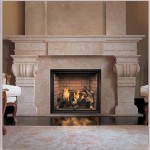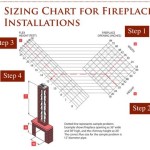Vented vs. Ventless Gas Fireplace Logs: A Comparative Analysis
Gas fireplace logs offer a convenient and aesthetically pleasing alternative to traditional wood-burning fireplaces. They provide the ambiance of a fire without the hassle of gathering wood, building a fire, and cleaning up ashes. However, a crucial decision when choosing gas logs involves selecting between vented and ventless models. Each type presents distinct advantages and disadvantages relating to safety, efficiency, aesthetics, and installation requirements.
Vented gas logs are designed to be used in a fireplace with a functioning chimney or vent. They produce a more realistic flame appearance and generate significantly fewer emissions within the living space. Conversely, ventless gas logs are designed for use in fireplaces without a chimney or vent. They operate more efficiently but produce higher levels of emissions and may offer a less authentic flame presentation.
Aesthetic Appeal and Flame Realism
One of the primary considerations for many homeowners involves the visual appeal of the gas logs. Vented gas logs are generally considered to offer a more realistic flame appearance. The presence of a vent allows for a larger, more yellow flame that dances and flickers in a way that closely mimics a natural wood-burning fire. This is because the vent allows for a greater volume of air to fuel the flame, resulting in a more dynamic and visually engaging fire.
Ventless gas logs, on the other hand, typically produce a smaller, bluer flame. This is due to the design constraints that prioritize complete combustion to minimize emissions. While some ventless models incorporate features to enhance flame realism, they often struggle to replicate the authentic look of a vented gas log fire. The flame characteristics are influenced by the need to burn gas more completely, which results in a different combustion process and visual outcome.
The choice between vented and ventless logs ultimately depends on the homeowner’s priorities. Individuals who prioritize visual realism and are willing to accept lower heating efficiency may prefer vented gas logs. Those who place a greater emphasis on energy efficiency and are less concerned about achieving a perfectly realistic flame might opt for ventless models.
Heating Efficiency and Energy Consumption
The efficiency of gas fireplace logs is a significant factor for homeowners seeking to supplement their home heating. Ventless gas logs are considerably more energy-efficient than their vented counterparts. Because they do not require a chimney or vent to exhaust combustion byproducts, a greater percentage of the heat generated radiates directly into the room. This can translate into lower heating bills, particularly in smaller spaces.
Vented gas logs, by design, lose a significant portion of their heat up the chimney. The venting system is necessary to remove carbon monoxide and other harmful gases, but it also allows heated air to escape. This results in a lower overall heating efficiency, meaning that more gas is consumed to achieve the same level of warmth compared to a ventless system.
While ventless gas logs offer superior heating efficiency, it's essential to consider the potential limitations. Their suitability for a given space depends on proper sizing and ventilation. Overly large ventless units in small or poorly ventilated rooms can lead to a buildup of moisture and combustion byproducts, potentially impacting air quality. Consequently, selecting the correct size and ensuring adequate ventilation is vital for safe and efficient operation.
Safety Considerations and Indoor Air Quality
Safety is paramount when considering gas fireplace logs. Vented gas logs are generally considered safer in terms of indoor air quality. The chimney or vent effectively removes carbon monoxide, water vapor, and other combustion byproducts from the living space, minimizing the risk of indoor air pollution.
Ventless gas logs, however, release all combustion byproducts directly into the room. While these units are equipped with oxygen depletion sensors (ODS) that shut off the gas supply if oxygen levels drop to unsafe levels, they still contribute to the accumulation of moisture and other gases within the home. This can be a concern, particularly for individuals with respiratory sensitivities, allergies, or asthma.
Moreover, proper installation and maintenance are crucial for both vented and ventless gas logs. Vented logs require a properly functioning chimney that is free of obstructions and regularly inspected. Ventless logs require adequate ventilation in the room where they are installed, and the ODS system should be checked periodically. Ignoring these precautions can compromise safety and lead to potential health hazards. The use of a carbon monoxide detector is highly recommended, regardless of the type of gas logs used.
In summary, selecting between vented and ventless gas logs requires careful consideration of various factors, including aesthetic preferences, heating efficiency, safety concerns, and installation requirements. Understanding the distinct characteristics of each type allows homeowners to make an informed decision that aligns with their individual needs and priorities.

Vented Vs Ventless Gas Logs What S The Difference

Vented Vs Ventless Gas Fireplace Logs

Which Is Better Vented Or Non Gas Logs

Vented Vs Ventless Gas Logs Woodlanddirect Com

Vented Vs Ventless Gas Logs Differences How To Choose

Vented Vs B Vent Direct Free Dixie S

Vented Vs Ventless Gas Logs Differences How To Choose

Vented Vs Ventless Gas Logs Which Is Best For You

Vent Free Gas Logs Pros And Cons Kansas City Chimney Service

Gas Logs Vented Vs Ventless Royal Oak Mi Fireside








